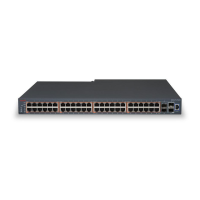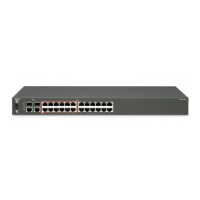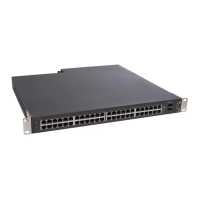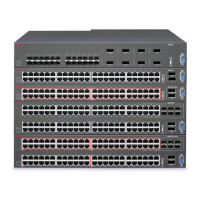Avaya C360 Layer 3 Features
194 Installation and Configuration Guide Avaya C360 Multilayer Stackable Switches, version 4.5
IP Fragmentation and Reassembly
IP Fragmentation and Reassembly Overview
The C360 supports IP Fragmentation and Reassembly. This feature allows the router to send
and receive large IP packets where the underlying data link protocol constrains MTU (maximum
transport unit).
IP fragmentation involves breaking a datagram into a number of pieces that can be
reassembled later. The IP source, destination, identification, total length, and fragment offset
fields, along with the "more" fragment and "don't" fragment flags in the IP header, are used for
IP fragmentation and reassembly.
IP Fragmentation works as follows:
1. IP packet is divided into fragments
2. each fragment becomes its own IP packet
3. each packet has same identifier, source, destination address
4. fragments are usually not reassembled until final destination
IP Fragmentation/Reassembly CLI Commands
In order to... Use the following command...
Clear the fragment database
and restore its defaults
clear fragment
Set the maximum number of
fragments that can comprise a
single IP packet
fragment chain
Set the maximum number of
fragmented IP packets, destined
for the router, to reassemble at
any given time
fragment size
1 of 2

